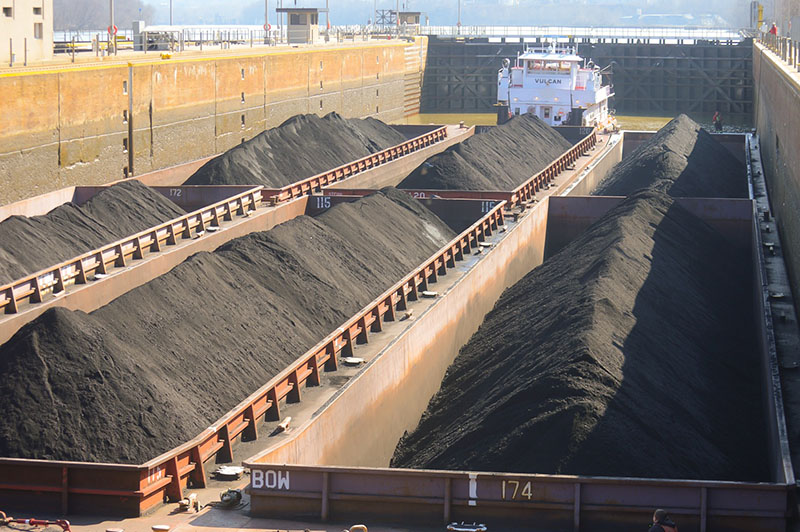An overbuilt market, mild winters and sluggish demand from sectors such as aluminum, coal and crude oil have backed the barge industry into a corner, causing a drop in utilization.
Houston-based Kirby Corp., the largest inland tank barge company in the U.S., saw utilization numbers in the low- to mid-80% range during the 2016 third quarter. (Kirby’s fourth quarter numbers are scheduled to be released on Feb. 1.)
“The relatively sharp drop in utilization that we first experienced in July continued through most of the third quarter,” Kirby’s president and CEO David Grzebinski told analysts on Oct. 30, 2016.
According to Department of Energy numbers, shipments of crude oil, biofuels and refined products shipped from the Midwest to the Gulf Coast totaled 8 million bbls., the lowest level since the second quarter of 2010. In the third quarter 2016, movements of crude oil along that same route fell to 1.6 million bbls., a 53.5% decline from the same time a year before.
On the dry cargo side, grain exports have been strong the past year, but the chances of that continuing at the pace it did in 2016 are not likely.
“Every year is a new cycle,” said Sandor Toth, publisher of River Transport News, Silver Spring, Md. “Last year we benefitted from a stunted corn crop in South America. Odds are we aren’t going to see that again this year.”
The U.S. Department of Agriculture recently lowered slightly its estimate for this year’s harvest to 15.148 billion bushels from 15.226 billion bushels in an earlier estimate, according to RTN. USDA also projects that corn exports for 2016-2017, a banner year, will hit 2.225 billion bushels, but drop to 1.95 billion bushels in 2017-2018.
Meanwhile, the coal industry has been battered over the last few years, hit by environmental regulatory restrictions and low natural gas prices. However, there have been some signs of recovery.
Recently, stockpiles of coal have been shrinking, falling to a low of about 158 million tons in September. In addition, natural gas prices have been climbing, rising to their highest levels since December 2014. Yet when RTN compared the third quarter of 2016 to the third quarter of 2015 and found that total U.S. electricity generation increased by 2.7%, it also discovered that coal-fired generation still fell by 1.3%. “But at least the war on coal is over,” Toth said, referring to President-elect Donald J. Trump’s promise to help the coal industry get back on its feet.
Hopper barge deliveries in 2016 increased by 10.6%, with deliveries of almost 1,000 new barges. Using Coast Guard data and its own new construction survey, RTN found that barge operators took delivery of 973 new jumbo hopper barges. Add to that record deliveries of tank barges in 2013 and 2014 and the industry is suffering from a severe equipment hangover. (Kirby bought more new barges than anyone else in those years.)
“We’ve seen cheap steel and many of the barge builders thought it would be a good time to build barges,” said Toth. “I’m hearing that 2017 will be much slower for barge building.” In fact, Trinity Marine Products closed its Port Allen facility in Brusly, La., in December in spite of the fact that the company built 660 of the 973 hopper barges delivered last year.
Toth said he is not pessimistic but not necessarily optimistic either. “I’ve been doing this long enough to know that you never know what might be coming,” he said. “Doesn’t look good, but you never really know until it plays out.”




